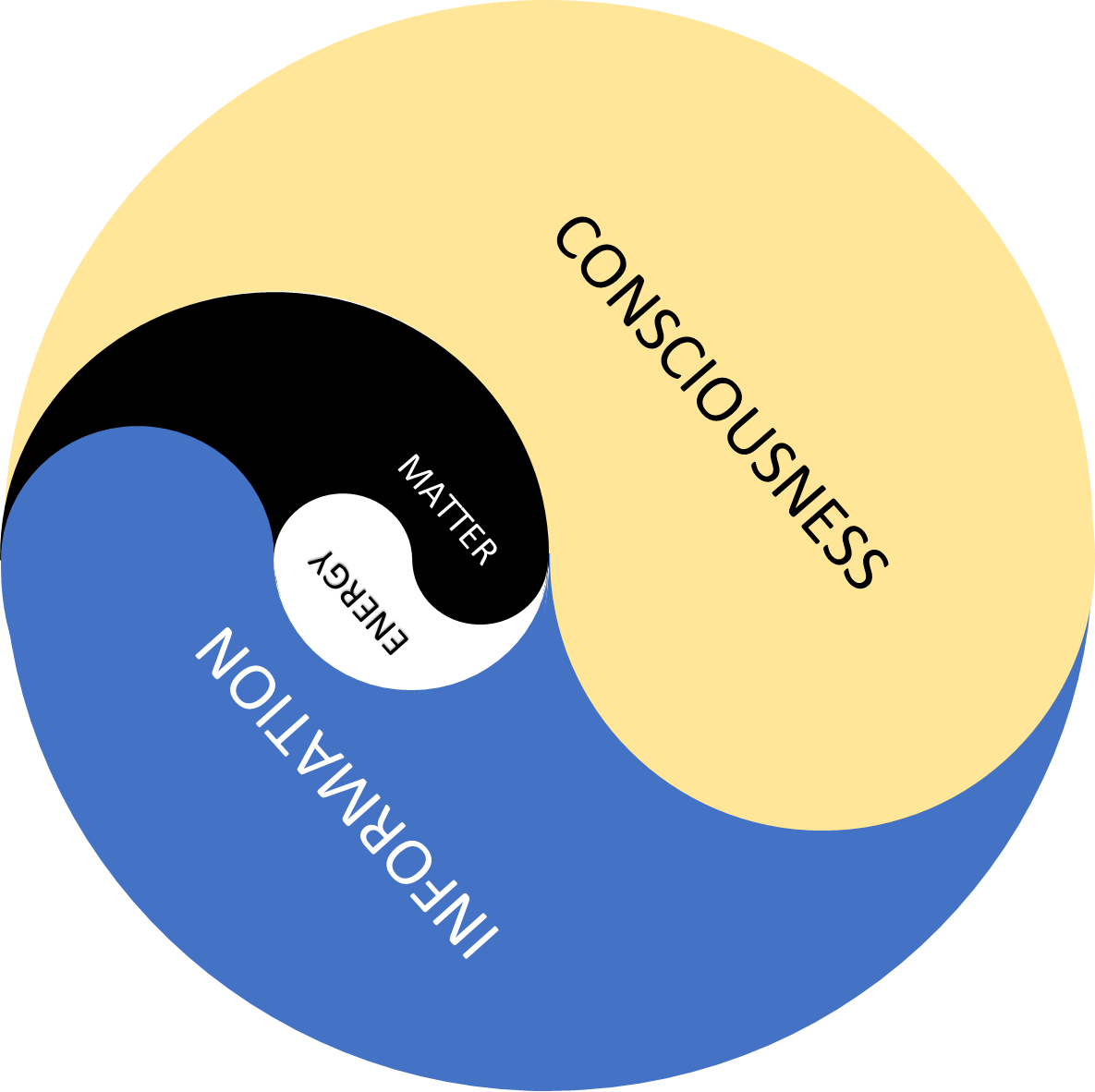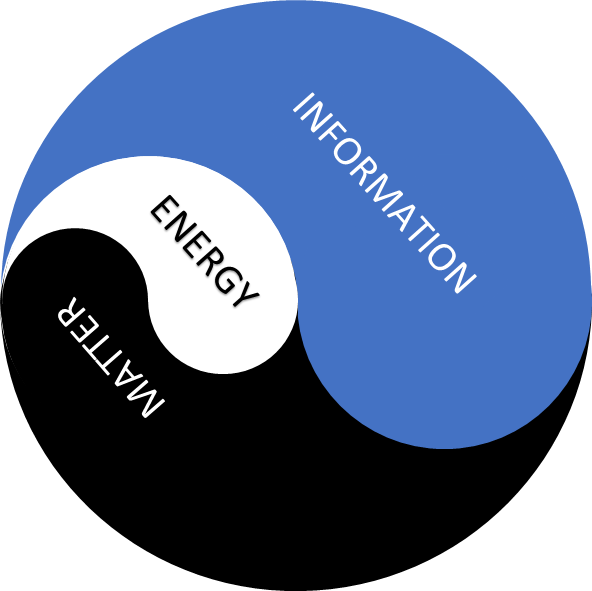I guess everyone expects that all seasoned professionals know absolutely everything about their craft. (And you may even think that these professionals are supposed to have some hidden secrets). Since what I do for a living is help others manage their data—my product is that ever boring and technical information—here is something like a confession of what I really think of it. In fact, information is one of the world’s biggest mysteries…
We can all agree that information is expressed in bits such as 0/1, true/false, black/white, electron spin up/down, etc. Information is distinction. Technically, we say that information is expressed in a binary form. Information does not need anything above binary (any third, fourth or fifth element, etc.), but it can make up super-complex worlds such as those in the popular computer game Minecraft.
But this basic statement says something even more important: information does not exist in unity; in the world of all 0s or all 1s there is no information. There must be something to give birth to information. Where there is singularity, there is no information.
According to contemporary mainstream science, our whole physical world consists of matter and energy, which can be transformed from one to the other and back as well as take various forms while the total amount must remain the same. You can burn a couple of logs on a campfire and the matter of the wood will mostly transform into the light and heat given off by the flames. To promote this scientific truth, you can buy a T-Shirt saying: “You Matter! (Unless you multiply yourself by lightspeed squared, then you Energy)”.
You see, these never-ending transformations of energy and matter relate to information as well. The order and structure of beautiful snowflakes or lack of it in the chaotic movement of particles in plasma is described by information. You need much less information to describe a diamond crystal (something with a clear structure) compared to the precise position and velocity of each H2O molecule of hot steam (something chaotic and out of order). With each transformation the information changes, but it never disappears.
The word information comes from in-form—meaning to give form to matter (or energy). Information does not exist without matter or energy, because only they can bear or express the information. And vice versa, matter or energy cannot exist without information, which always appears as an expression of the order or disorder of matter and energy.
Another mysterious word connected with information is entropy. It has been empirically as well as mathematically proven that the entropy in a system always increases. The more you try to make order on your desk or your hard disk (=lower the entropy) the more heat you produce (by burning calories, heating your CPU) in the environment (=increase the entropy), meaning that afterwards the total entropy is higher than before. The pay-off for an orderly desk is even higher disorder dissipated into space. The usual definition is that entropy describes the amount of order or disorder in a system. But for me, the best definition is that entropy is the information that we do not know about! You may know perfectly well where your papers and documents are kept on your desk but have absolutely no clue about the velocities and positions of the particles you accelerated by the heat emitted.
So far everything has been safe, based on scientific evidence and mathematical proofs. Now, please fasten your seatbelts, we are getting to the second part. In the next paragraph, I will introduce a C-word that has been recognized as a 100% career killer for any seriously thinking professional (not even talking about scientists).
By saying that “information never disappears, it only becomes unknown” and that “entropy is the information that we do not know about”, we are bringing a super-dangerous actor to the stage—something or somebody who is capable of knowing or not knowing something. This actor—you—for sure exists (unless you revoke your own existence). And since there is nothing else in the world but energy and matter accompanied by information, you have no choice but to agree you consist of these three components. And you are certainly thinking, feeling and reading this text and are aware of the contents of it.
But how do you know that you know something? I believe that you know something only by sensing it. The information that you should stop at the railway crossing is conveyed to you by sensing the red light from the traffic light. Sensing means being sentient. And sentient beings are conscious. The C-word is consciousness.
The existence and nature of consciousness is sometimes called a hard problem compared to “soft” scientific problems like the existence of dark matter, black holes or the further evolution of artificial intelligence. Simply saying, we do not know what consciousness is, whether only humans are conscious, whether machines can become conscious or whether animals, flowers or even rocks enjoy (or suffer from) some level of consciousness. We do not even know if your perception of the colour yellow is the same as that sensed by your friend or by an animal.
Fortunately, there is a theory that is supported by great scientific minds like my favourites Max Tegmark (author of The Mathematical Universe) and Brian Greene (author of The Elegant Universe). This theory calculates consciousness in relation to—guess what—information; it is called the Integrated Information Theory (IIT). The theory was proposed by neuroscientist Giulio Tononi, and it is promoted by another respected neuroscientist, Christof Koch.
Max Tegmark believes that consciousness literally “is the way information feels when being processed in certain complex ways”, and Brian Greene writes similarly that consciousness emerges only when a complex set of integrated information is processed in a large context. IIT actually connects consciousness with complex structures of matter (like human brains) through integrated sets of irreducible information. According to the theory, the more integrated the information, the higher the level of consciousness.
In my opinion, IIT also provides a nice explanation for observations of two separate consciousnesses in patients whose brain hemispheres were surgically split (in so-called corpus callostomy used to heal epileptic seizures). The famous neuroscientist V. J. Ramachandran had a patient whose left hemisphere was atheist while the right one was religious. Each hemisphere was apparently independently conscious. I deduce that, according to IIT, each hemisphere contained enough integrated information to host consciousness (whereas before the surgery it also contained enough integrated information, but it was rather redundant).
Like physicists cannot say what energy is, only how it behaves, IIT supporters do not explain what consciousness is, but how it can be detected in complex physical systems. In one of its practical applications, IIT is ambitioned to empirically prove whether a patient in a coma is still conscious or not.
_______________________________________________________________________
So, we have come full circle. Energy and matter turn into one another and give birth to information, which always accompanies their never-ending transformations. But the whole loop allows for the emergence of consciousness, which in turn gives the whole apparatus some kind of “sense”. Entropy would not be allowed to grow ad infinitum in an ever-expanding universe unless it were measured by the amount of what we do not know. And, I do not know if this model sufficiently describes the real world, but I do know that I like it and I enjoy being part of it.

(And by the way, if we say that information is always distinct and expressed as a discrete value [1 or 0] and it is so interconnected with spatio-temporal structure and order of matter and energy, then all space and time must therefore be granular, not continuous… So, bad news for all the turtles who believed Zeno of Elea when he said that they would always stay a step ahead of Achilles.)
And now, I expect you are waiting for somebody to come and put a straitjacket on me. 🙂
Author: Petr Hájek
Information Management Advisor
_________________________________________________________________
Recommended reading:
- Life 3.0 by Max Tegmark
- Until the End of Time (Mind, Matter and Our Search for Meaning in an Evolving Universe) by Brian Greene
- The Tell-Tale Brain by Vilayanur S. Ramachandran
- “Integrated information theory: from consciousness to its physical substrate”
- “Why I Am Not an Integrated Information Theorist (or The Unconscious Expander)”
And maybe also:
- The Emperor’s New Mind by Roger Penrose
And paradoxically also:
- The Grand Design by Stephen Hawking
- Evoluce svým vlastním tvůrcem by Miroslav Veverka
